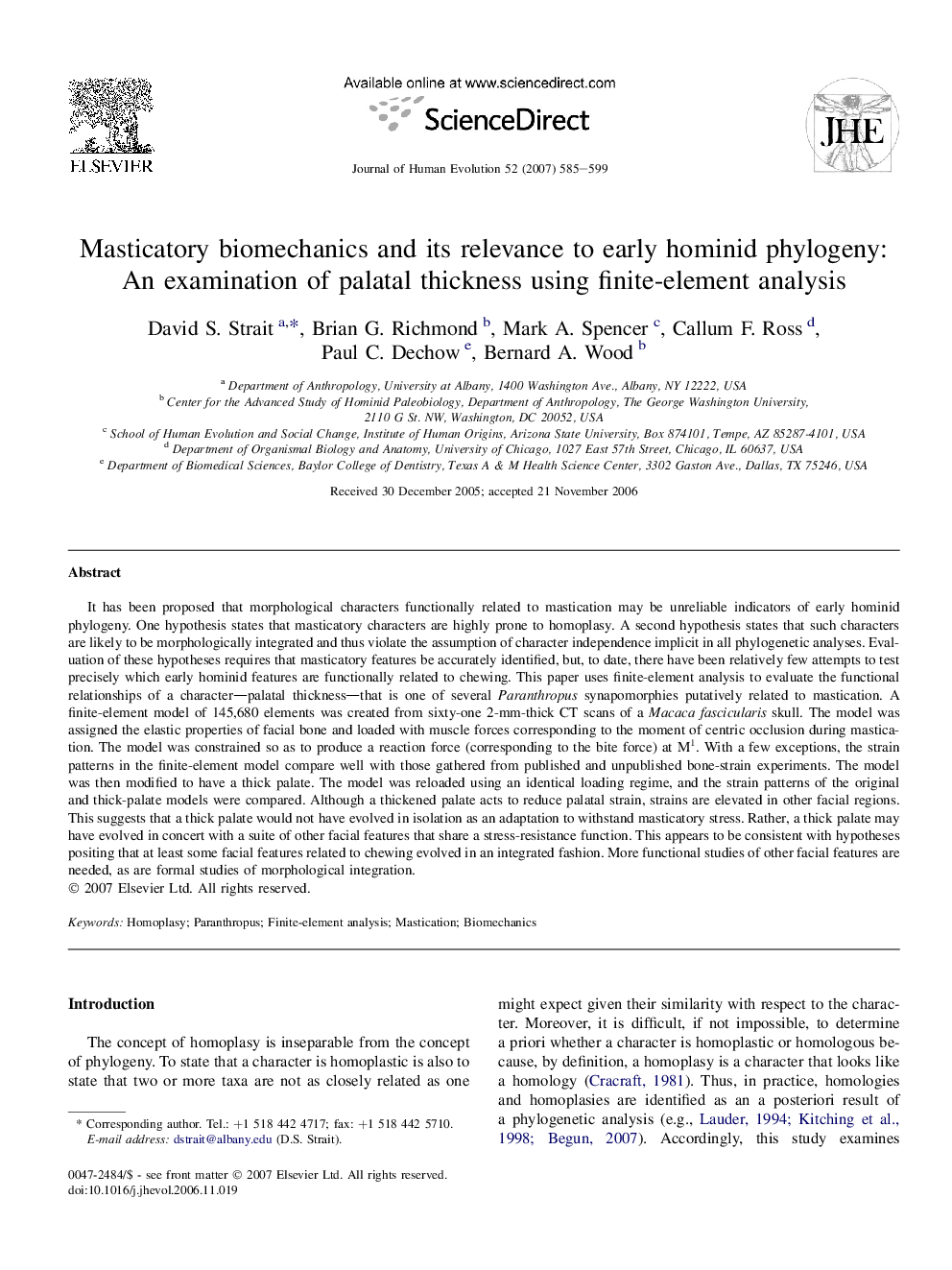| کد مقاله | کد نشریه | سال انتشار | مقاله انگلیسی | نسخه تمام متن |
|---|---|---|---|---|
| 4556867 | 1329508 | 2007 | 15 صفحه PDF | دانلود رایگان |

It has been proposed that morphological characters functionally related to mastication may be unreliable indicators of early hominid phylogeny. One hypothesis states that masticatory characters are highly prone to homoplasy. A second hypothesis states that such characters are likely to be morphologically integrated and thus violate the assumption of character independence implicit in all phylogenetic analyses. Evaluation of these hypotheses requires that masticatory features be accurately identified, but, to date, there have been relatively few attempts to test precisely which early hominid features are functionally related to chewing. This paper uses finite-element analysis to evaluate the functional relationships of a character—palatal thickness—that is one of several Paranthropus synapomorphies putatively related to mastication. A finite-element model of 145,680 elements was created from sixty-one 2-mm-thick CT scans of a Macaca fascicularis skull. The model was assigned the elastic properties of facial bone and loaded with muscle forces corresponding to the moment of centric occlusion during mastication. The model was constrained so as to produce a reaction force (corresponding to the bite force) at M1. With a few exceptions, the strain patterns in the finite-element model compare well with those gathered from published and unpublished bone-strain experiments. The model was then modified to have a thick palate. The model was reloaded using an identical loading regime, and the strain patterns of the original and thick-palate models were compared. Although a thickened palate acts to reduce palatal strain, strains are elevated in other facial regions. This suggests that a thick palate would not have evolved in isolation as an adaptation to withstand masticatory stress. Rather, a thick palate may have evolved in concert with a suite of other facial features that share a stress-resistance function. This appears to be consistent with hypotheses positing that at least some facial features related to chewing evolved in an integrated fashion. More functional studies of other facial features are needed, as are formal studies of morphological integration.
Journal: Journal of Human Evolution - Volume 52, Issue 5, May 2007, Pages 585–599